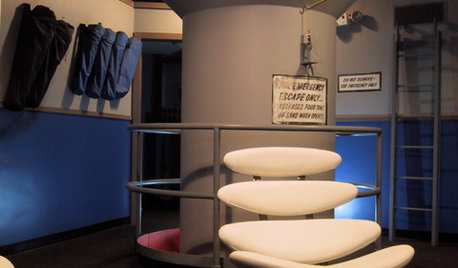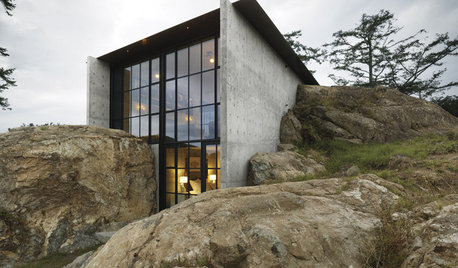Hydraulic in cold
bckskin2
15 years ago
Related Stories

FUN HOUZZTaking Cover in a Former Nuclear Missile Silo
A Cold War relic is now a modern home, thanks to an Australian architect with a flair for the unusual
Full Story
REMODELING GUIDESOld is New: Cement Tile Makes a Comeback
Get Ideas for Using Colorful Moorish-Inspired Tile at Home
Full Story
SAVING WATER11 Ways to Save Water at Home
Whether you live in a drought-stricken area or just want to help preserve a precious resource, here are things you can do to use less water
Full Story
CONCRETEWhy Concrete Wants to Crack
We look at the reasons concrete has a tendency to crack — and what you can do to help control it
Full Story
SHOWERSYour Guide to Shower Floor Materials
Discover the pros and cons of marble, travertine, porcelain and more
Full Story
HOUZZ TOURSMy Houzz: Accessibility With Personality in an 1870 Home
Hand-painted murals and personal touches fill an accessible home with warmth and charm
Full Story
HOUZZ TOURSMy Houzz: Contemporary Beauty in an Ontario Home
Rich colors, sleek lines and a backyard oasis fulfill both halves of a Canadian couple's wish list for their upgraded home
Full Story
HOMES AROUND THE WORLDHouzz Tour: A Shoreline Home Glows Like a Lantern
This sailing-mad family’s house in New Zealand, inspired by traditional boat sheds, responds to light and wind
Full Story
KITCHEN DESIGNHow to Choose and Use Ecofriendly Kitchen Appliances
Inefficient kitchen appliances waste energy and money. Here's how to pick and use appliances wisely
Full Story
BOOKSBooks: Tom Kundig's Houses 2
Expansive new release captures Seattle architect's beautiful, highly-crafted, often kinetic home designs
Full StorySponsored






johninmd
johninmd
Related Professionals
Ballwin Landscape Architects & Landscape Designers · Benbrook Landscape Architects & Landscape Designers · San Juan Landscape Architects & Landscape Designers · Allentown Landscape Contractors · Concord Landscape Contractors · Arden-Arcade Landscape Contractors · Centereach Landscape Contractors · Hurricane Landscape Contractors · Melrose Landscape Contractors · Spring Landscape Contractors · Teaneck Landscape Contractors · Maplewood Landscape Contractors · Riverside Window Contractors · East Renton Highlands Window Contractors · Missouri City Window Contractorsmownie
bckskin2Original Author